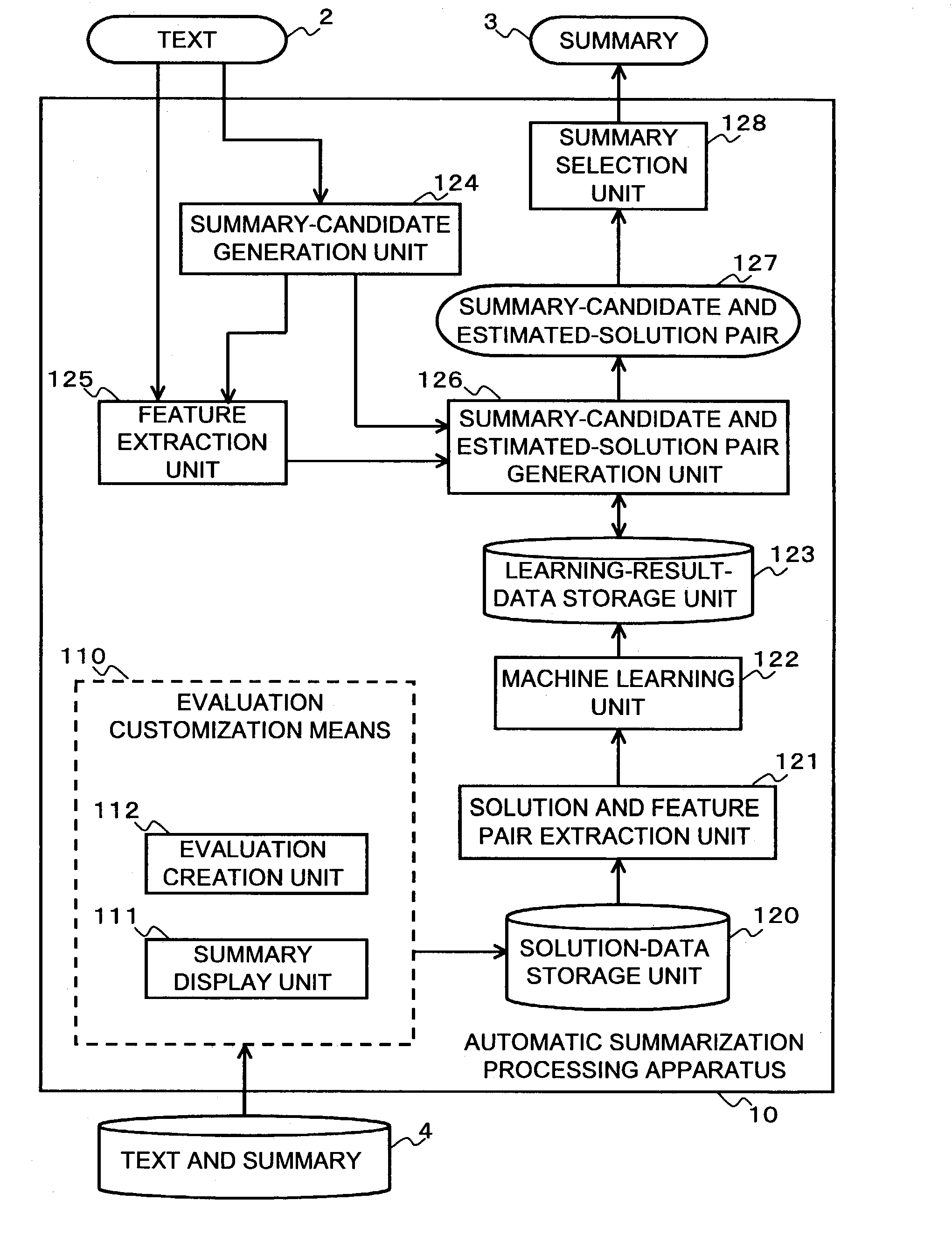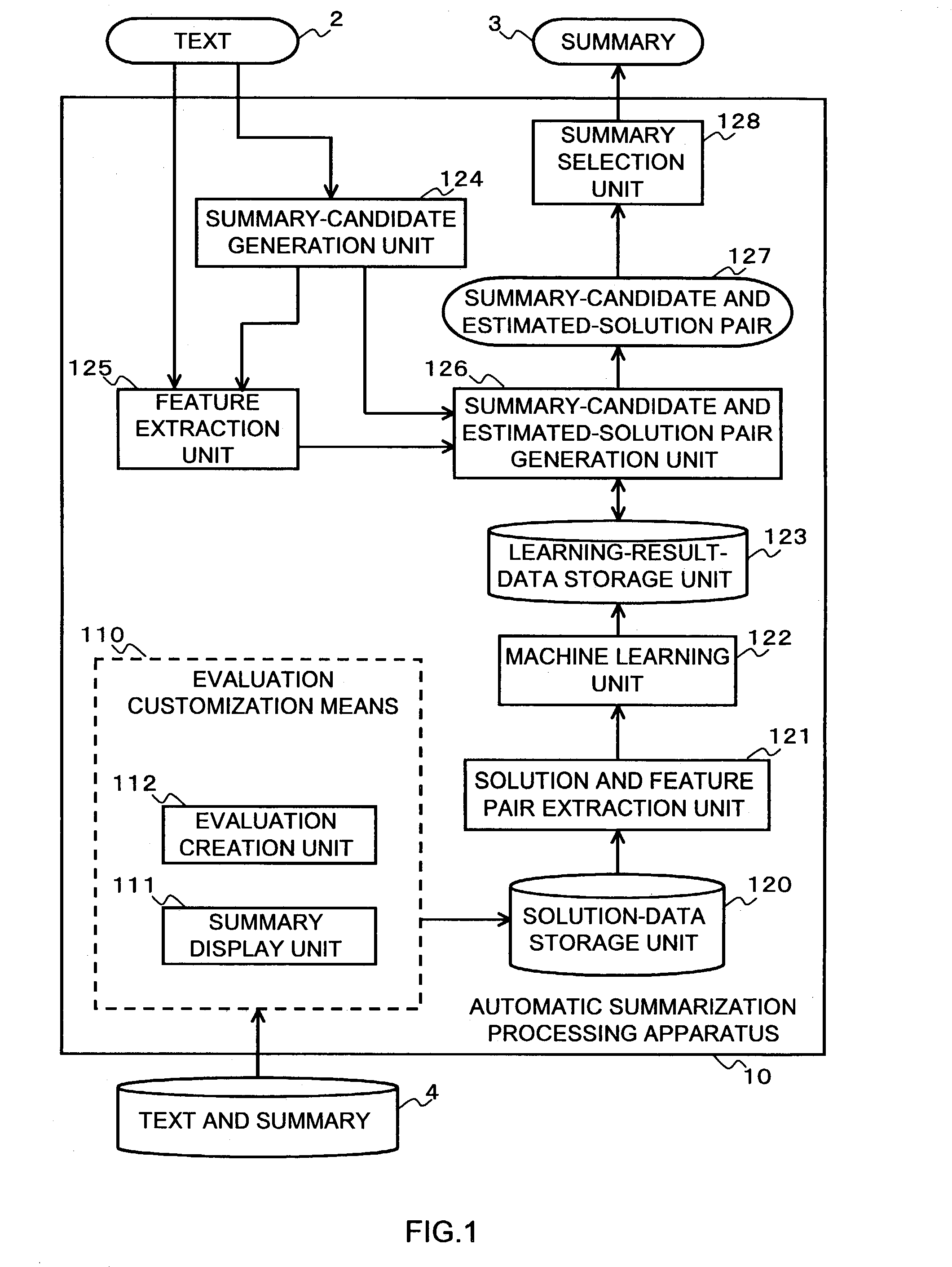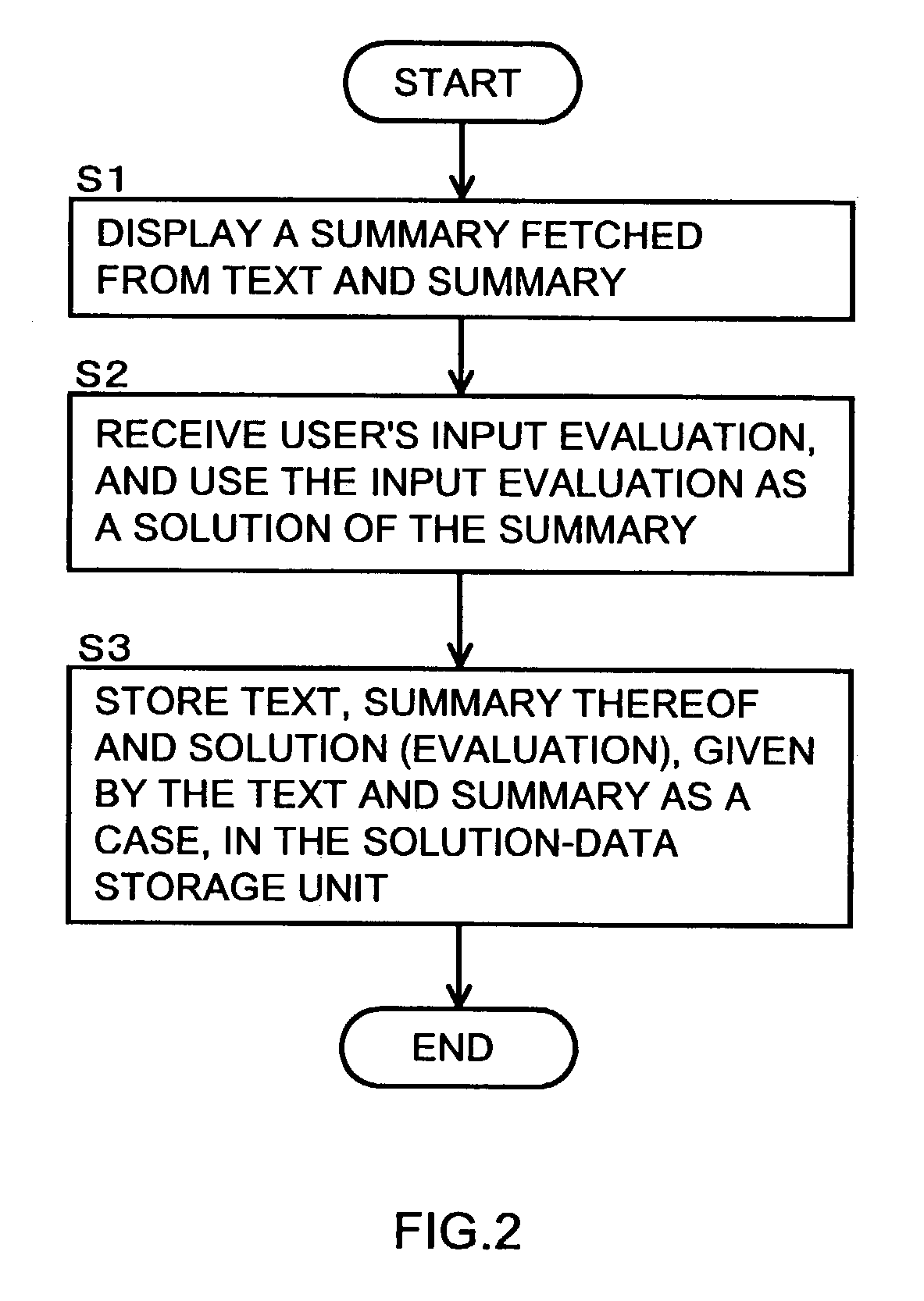Solution data edit processing apparatus and method, and automatic summarization processing apparatus and method
a processing apparatus and summarization technology, applied in the field of solution data edit automatic summarization processing apparatus and method, can solve the problems of personal differences and use differences in the evaluation of summaries
- Summary
- Abstract
- Description
- Claims
- Application Information
AI Technical Summary
Benefits of technology
Problems solved by technology
Method used
Image
Examples
first embodiment
[0049]In order to explain the evaluation customization processing consider the case where three users A, B and C customize each of the summaries. Suppose that the user A evaluates a summary by attaching importance to the point that the summary includes a description on precision. Suppose that the user B evaluates a summary by attaching importance to the point that the summary includes a description on a method, and that the user C evaluates a summary by attaching importance to the point that the summary includes a description on both precision and a method. Also, assume that evaluation of a summary is performed by dividing into three levels, that is, by grouping (evaluating) into one of the following: evaluation 1=good, evaluation 2=intermediate, and evaluation 3=poor.
[0050]FIG. 2 illustrates a flowchart of the evaluation customization processing according to the first embodiment. First, assume that the text and summary 4 has been prepared. FIG. 3 shows an example of the text and s...
case c3
[0057]Next, the machine learning unit 122 learns what solution is apt to be produced at what feature set from pairs of solution and feature set, and stores the learning result in the learning-result-data storage unit 123 (step S12). Here, in the case of the processing of the user A, the solution data “case: problem→solution” stored in the solution-data storage unit 120 is as follows:[0058]Case c1: text-summary r1→evaluation 1,[0059]Case c2: text-summary r2→evaluation 3,[0060]Case c3: text-summary r3→evaluation 2.
[0061]The machine learning unit 122 learns, by machine learning, in what case, evaluation 1 to evaluation 3 are produced based on the solution data. For example, from the case c1→evaluation 1 and the case c3→evaluation 2, the machine learning unit 122 learns that the evaluation increases when an expression of precision, for example, the expression “numeric characters+[%]” appears. Here, the expression “numeric characters+[%]” is an example of a feature used for machine learn...
second embodiment
[0092]FIG. 9 illustrates a flowchart of the evaluation customization processing according to the The text display unit 141 fetches the text 5 prepared in advance, and displays it on the display unit (step S31). On the displayed text 5, the user specifies the portion suitable for a summary, and the range specified by the user is accepted and extracted (step S32). Also, if the portion of the specified range is edited, the edit content is accepted, and the portion of the specified range after the edit is used as a summary (step S33). The user specifies the range to use as a summary on the displayed text by dragging with a pointing device such as a mouse, or by specification of a start position and an end position indicated trough cursor-key movement. The text display unit 141 displays the specified range by distinguishing the range not specified using inversion or marking on the display.
[0093]FIG. 10 illustrates an example of a text to be displayed and an example of the specified rang...
PUM
 Login to View More
Login to View More Abstract
Description
Claims
Application Information
 Login to View More
Login to View More - R&D
- Intellectual Property
- Life Sciences
- Materials
- Tech Scout
- Unparalleled Data Quality
- Higher Quality Content
- 60% Fewer Hallucinations
Browse by: Latest US Patents, China's latest patents, Technical Efficacy Thesaurus, Application Domain, Technology Topic, Popular Technical Reports.
© 2025 PatSnap. All rights reserved.Legal|Privacy policy|Modern Slavery Act Transparency Statement|Sitemap|About US| Contact US: help@patsnap.com



